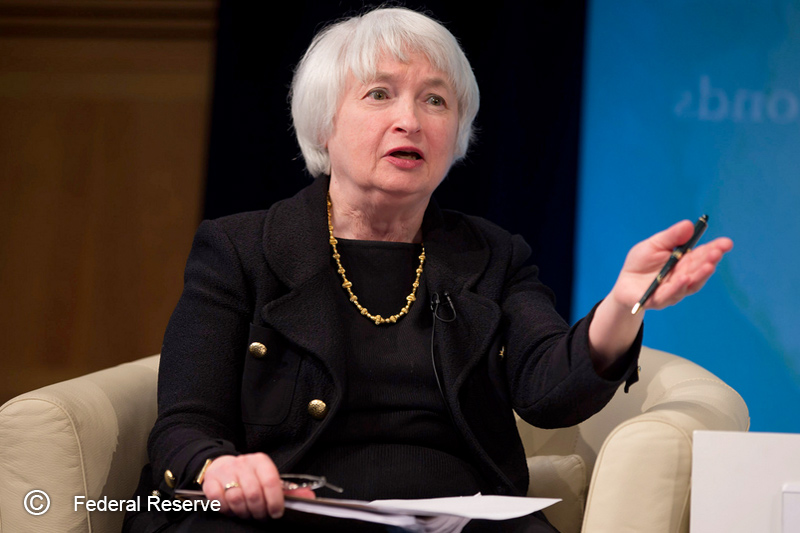Investing.com -- Shortly after the Federal Open Market Committee approved its first interest rate hike in nearly a decade on Wednesday afternoon, Federal Reserve chair Janet Yellen turned to the U.S. central bank's plan for a gradual path upward as the Fed begins its first tightening cycle since 2006.
In a unanimous decision on Wednesday, the FOMC increased its benchmark Federal Funds Rate by 25 basis points to a range between 0.25 and 0.50%, ending a zero interest rate policy it maintained since December, 2008, at the height of the Financial Crisis. The announcement came seven years to the day the Fed last expanded monetary policy, when it lowered the target range by a quarter of a point to a level between zero and 0.25%.
Unlike the Fed's previous tightening cycle, Yellen vowed that the FOMC will not be mechanical in its approach to normalize monetary policy by taking a close look at incoming economic data before it decides to raise rates again. For a two-year period beginning in 2004, the FOMC raised the Fed Funds Rate by 25 basis points in 17 consecutive meetings, culminating in a quarter-point hike in June, 2006 to 5.25%.
In its latest median projections, the FOMC anticipates that the Fed Funds Rate will reach 1.4% by the end of 2016, before approaching 2.5% by the completion of 2017. While the projections suggest the FOMC could approve up to four modest rate hikes next year, Yellen said Wednesday that the Fed does not want to be constrained by such a mechanical type of formula.
By approving a rate hike before the end of this year, Yellen indicated that the Fed can continue to raise rates gradually to reach its long-term projections. If the FOMC delayed lift-off on Wednesday, it may have been forced to tighten too abruptly to prevent the economy from overheating.
"I want to emphasize that while we have said gradual, that gradual does not mean mechanical, evenly-timed or equally sized interest rate changes," Yellen said. "It's not what the committee means by it. My guess is the economy will progress in a manner that is not sufficiently even. I want to assure you that we will be data-dependent, I strongly doubt that it will mean equally spaced hikes," Yellen said.
Yellen also declined to provide a method for linking future rate hikes with rising inflation. The FOMC has failed to reach its targeted goal of 2% inflation in every meeting over the last three years. In 2016, the Fed projects that the Core PCE Index, its preferred gauge for inflation will increase to 1.6%. The core reading strips out volatile food and energy prices. As with its projections in September, the FOMC does not anticipate that Core PCE inflation will reach 2% until 2018.
"I'm not going to give you a simple formula for what we need to see on the inflation front," Yellen said.
While Yellen remains disappointed with the current pace of inflation, she reiterated that she expects temporary factors restraining price increases to abate when crashing oil prices stabilize and a stronger dollar levels off. On Wednesday, the front month contract for U.S. crude futures closed below $36 a barrel to fall back to near seven-year lows.
"I have been surprised by the further downward movement in oil prices, but we do not need to see oil prices rebound to higher levels for the impact on inflation to wash out -- all they need to do is stabilize," Yellen said. "I certainly grant we've had a series of shocks pushing them down. We're not looking for them to maneuver back to higher levels, merely to stabilize."
The Fed officially begins policy normalization on Thursday when the Open Market Desk at the Federal Reserve Bank of New York conducts an auction on Overnight Reverse Repurchase Operations or reverse repo's. As part of its policy decision, the FOMC voted to raise the rate on excessive reserve balances held at the bank to 0.50% and to offer rates on reverse repo's at 0.25%. In effect, the payments on reverse repo's will serve as a floor for the program, while interest on the excessive reserves acts as a ceiling.
For the time being, Yellen said the FOMC is removing a $300 billion cap on the reverse repo program it put in place during a two-year testing phase.
